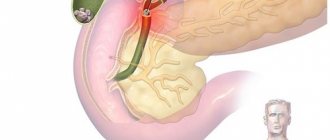Video
Pain under the shoulder blade. Question answer.
Topic: Questions and Answers
Pain under the shoulder blade
Topic: Encyclopedia of diseases
Title
- Pain under the left shoulder blade
- Pain under the right shoulder blade
- Diagnostics
- Treatment methods
Pain under the shoulder blade is a fairly common complaint among patients and often presents difficulties both for diagnosis and treatment. The pain can be localized both under the left and under the right shoulder blade.
Nature of pain (what kind of pain it can be)
The nature of the pain that occurs due to problems with pain in the back near the shoulder blades and neck is of great importance. To roughly understand what pain is a symptom of in a particular case, listen to your body and determine the nature of the signals it sends.
Sharp and dull
Acute pain may indicate a developing pathology of internal organs or problems with the spine. Supposed reasons:
- cholecystitis
- most often observed as a response to eating too fatty, spicy or fried foods, in this state the pain radiates to the right hypochondrium; - stomach ulcer - pain syndrome appears only if there is an opening into the pancreas, and not only the area of the shoulder blades, but also the stomach hurts;
- osteochondrosis of the thoracic or cervical spine - such pain usually becomes the body’s “response” to heavy lifting or sudden movement.
If your neck and between your shoulder blades hurt, and the pain is dull in nature, most likely the symptom indicates problems with the musculoskeletal system. The causes of pain may be damage or a pathological process in the ligaments, bones, tendons or muscles. However, such a symptom also does not exclude the possibility of developing diseases of the internal organs.
Sharp and stabbing
Sharp pain, as a rule, occurs if a person has a pinched muscle, an inflammatory process, or a spinal cord nerve root that is compressed. The disease was previously called radiculitis and was a complication of osteochondrosis or scoliosis. Also, if a sharp pain appears between the shoulder blades, it may be evidence of biliary colic, but at the same time there is additional pain under the ribs on the right, nausea and other digestive disorders are observed. If there is pain between the shoulder blades and the neck, this area is tingling, the pain may be a sign of:
- pleurisy – in addition, cough, shortness of breath, weakness will be noted;
- the initial stage of ulcer perforation - bloating, nausea, heartburn, and abdominal pain are also associated;
- biliary colic;
- pyelonephritis
.
To more accurately determine the cause of pain, pay attention to the accompanying symptoms. This will not allow you to make an accurate diagnosis, especially on your own, but the search circle will narrow significantly.
Strong or weak
Severe pain can be caused by disc protrusion between the vertebrae, as well as intercostal neuralgia - in this case, even breathing is very painful. Also, such pain syndrome can be a symptom of pancreatitis - in this case, nausea, diarrhea, vomiting, bloating and other signs of digestive dysfunction are noted. The most serious thing that can be indicated by severe pain in the neck and right shoulder blade is myocardial infarction
. The condition worsens to the point of loss of consciousness, arrhythmia and decreased blood pressure are often noted. Relatively mild pain more often indicates a chronic disease, which constantly reminds itself of itself in this way, as well as pathologies of the musculoskeletal system. If the pain is not severe, this may be the result, for example, of being in a draft, hypothermia, lifting heavy objects, etc.
Diagnosis of causes
If pain occurs under the shoulder blade on the right and persists for a long time, you should definitely consult a doctor. If you cannot independently determine from the existing symptoms which specialist you should make an appointment with, you should consult a therapist.
The doctor will evaluate the patient’s complaints and conduct an examination, the results of which will allow him to exclude a number of pathologies that can cause discomfort under the right shoulder blade. If necessary, he will definitely prescribe a series of laboratory and instrumental tests that will help establish the causes of pain and refer the patient to the specialist he needs: a neurologist, nephrologist, gastroenterologist, etc.
In the future, the patient may also be asked to undergo an examination, on the basis of which a specialist doctor will be able to make the correct diagnosis, assess the degree of pathological changes and select the optimal treatment. To diagnose the causes of pain under the right shoulder blade, the following are used:
- X-ray or CT scan of the spine - allows you to assess the condition of the vertebrae, their position, which makes it possible to diagnose scoliosis, kyphosis, and scapula injuries;
- MRI of the spine – used to diagnose pathologies of intervertebral discs and soft tissue structures;
- Ultrasound of the abdominal cavity - allows you to evaluate the size, shape, structure of the liver, pancreas, gall bladder.
Causes of pain in the neck and between the shoulder blades
There are many possible reasons why your back hurts between your shoulder blades and your neck. This symptom may be evidence of:
- injuries;
- osteochondrosis, kyphosis or scoliosis (curvature of the spinal column);
- spondyloarthrosis;
- hernias;
- neuralgia;
- infectious diseases;
- diseases of the cardiovascular system;
- pathologies of the digestive system;
- kidney diseases;
- side processes in systemic diseases.
It is worth taking a closer look at the most common causes of pain in the shoulder blades and neck to determine why the discomfort occurred.
Osteochondrosis and osteoarthrosis
Often there is pain under the left shoulder blade and neck when osteochondrosis worsens. This condition is a process of destruction and thinning of the cartilage tissue between the vertebrae, which leads to a decrease in the distance between them, pinched nerves and severe pain. Osteoarthritis often occurs as a complication of osteochondrosis, when the neck hurts not only because the elasticity of the cartilage decreases, but also because degenerative processes occur in the joints of the spinal column. Both diseases, as a rule, appear at the age of 40 years, when the body no longer renews itself properly.
Damage
Often the back hurts in the neck and shoulder blades when a person hits, falls or makes a sudden movement leading to damage to ligaments, muscles or joints. If you have been injured and then have pain between your shoulder blades and neck, you should contact a traumatologist as soon as possible, who will determine the cause of the condition and prescribe treatment. A neck injury is a very serious incident, so do not underestimate the possible consequences.
What diseases can cause pain
The spine between the shoulder blades and the neck hurt due to a large number of diseases. It is important to understand the causes of pain in order to begin proper treatment.
Cervicothoracalgia
This pathology characterizes a condition in which a person complains of pain in the neck and thoracic spine. The most common cause of cervitothoracalgia is osteochondrosis, leading to a narrowing of the canal in which the spinal cord is located, to the formation of osteophytes, as well as irritation of the nerve roots. Pain in the neck and chest in this condition can be different - the pain can be nagging, aching, strong, sharp and even shooting. Exacerbation of pain is easy to provoke - often a person cannot even turn his head normally.
Vertebrogenic cervicalgia
In this state, a person, in addition to complaining that the right shoulder blade and neck hurts, also notes a number of other extremely unpleasant symptoms. These may include:
- visual dysfunction;
- dizziness;
- autonomic dysfunction;
- limited neck mobility, crunching, neck muscle tension.
The condition can be provoked by any disease of the musculoskeletal system affecting the cervical spine - arthritis, spondylosis, osteoporosis and many others.
Thoracalgia
It is a condition in which a person has severe pain in the thoracic region. Often the cause is intercostal neuralgia, when nerve tissue is pinched, and a person experiences severe pain that radiates to the arms, head, etc. An exacerbation of the condition can occur at any time due to the adverse effects of cold, physical exertion, poor body position, etc.
Symptoms of intercostal neuralgia
It is believed that the main symptom of intercostal neuralgia is pain in the intercostal space. But how can one distinguish intercostal neuralgia from one symptom, even such a striking one? After all, pain in the ribs also occurs with other pathologies. Obviously, for an accurate diagnosis, more signs of intercostal neuralgia are needed. Therefore, we decided to talk about the symptoms and causes of intercostal neuralgia in more detail.
The name intercostal nerves speaks for itself. They are actually located between the ribs. Starting from the spine, they cover the chest on both sides. The intercostal nerve cannot suffer from a small or even moderate bruise, since it is located deep under the rib. Therefore, the mechanical cause of intercostal neuralgia can be serious injuries, for example, a fracture; a tumor compressing a nerve, or dystrophic pathology of the spine - osteochondrosis, hernia and disc protrusion.
In addition to mechanical ones, there are also infectious causes of intercostal neuralgia, most often a herpetic infection. Due to its characteristics, it often affects these nerves. Herpes, as a sign of intercostal neuralgia, is easily recognized by characteristic rashes that coincide with the area of pain.
Thus, the causes of intercostal neuralgia are infectious and mechanical. But, the connection between intercostal neuralgia and breathing is a myth. Remember, at the beginning of the article we talked about the difference between real intercostal neuralgia and what many people mistakenly consider to be such. For example, the appearance of intercostal neuralgia after a cold is not neuralgia at all, but myofascial syndrome. If you are not aware, myofascial syndrome is a muscle disease in which small painful areas - trigger points - form in the muscles. These points may remain in a latent state for a long time and not manifest themselves in any way. But as soon as they are activated, pain immediately arises. The most common factor in the activation of trigger points is overload of the affected muscles. The intercostal muscles are classified as respiratory muscles, as they are involved in the act of breathing. A cough is a forced exhalation. Therefore, intercostal neuralgia when coughing or after a cold is not neuralgia, as many people mistakenly think, but myofascial syndrome, provoked by overload of the respiratory muscles from coughing. By the way, an indirect sign of how to distinguish intercostal neuralgia from myofascial syndrome is the duration of the disease. True intercostal neuralgia takes a long time to heal. Especially if it is caused by a fracture or tumor. And myofascial syndrome has a shorter treatment period. But it is impossible to say exactly how long intercostal neuralgia lasts without seeing the patient. Firstly, you need to make sure that it is intercostal neuralgia and not some other pathology, and secondly, it all depends on the situation. Agree, neuralgia from herpes and from a fracture will have completely different treatment periods.
Separately, it is necessary to say about the so-called false symptoms of intercostal neuralgia. Muscle tension, muscle twitching, increased pain when coughing, sneezing, turning the body; forced body position to relieve pain, sweating, high blood pressure and a number of other symptoms are not signs of intercostal neuralgia, although they are often attributed to it. These symptoms refer to pathologies similar to neuralgia. Being able to distinguish between similar pathologies is one of the basic skills of a doctor, which is specially taught, and which allows the doctor to make an accurate and correct diagnosis. It remains only to remind you that a doctor for intercostal neuralgia is a chiropractor, or even better, a chiropractor-neurologist.
Features of treatment
To treat neck pain that radiates to the shoulder blades, you need to contact a qualified specialist. You can only eliminate pain if you eliminate the cause of its occurrence. Suppressing pain with analgesics is not the best solution, since the disease will continue to progress, leading to complications and deterioration of the general condition. Treatment is usually complex. If the problem lies in pathologies of the musculoskeletal system, for treatment the doctor prescribes:
- medicines;
- exercises;
- massage.
In addition to everything, it is worth using traditional medicine, but not forgetting about the main course of treatment and preliminary consultation with a neurologist .











